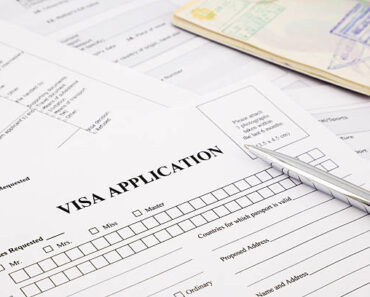For non-immigrant professionals looking to work in the United States, and US based companies looking to hire non-immigrant professionals, the H1 visa process is no strange concept. The H1 visa is an umbrella of visas that consists of the H-1B, H-1B1, H-1B2, H-1B3 and the H-1C each of which depends on the type of worker it applies to. Ultimately, this category of visas allows US based organizations to employ non-immigrants who have certain skills and proficiencies. Quite simply, it is an all access-pass to the American dream for non-immigrants.
Given its perks, this visa classification is easily one of the most sought after worldwide. However, between its numerous terms, conditions and limitations, the H1 visa process can get quite murky. Here is a detailed run-down of the H1 visa process –
Are You Eligible For a H1 Visa?
In order to fully understand eligibility conditions of the H1 visa, it is important to first note that different H1 visas apply to different people and situations. As such, you cannot simply request any H1 visa without sufficient information. Here are the H1 visa types and the types of workers eligible for them.
-
H-1B Visa:
Certified professionals, specialists, and Bachelor/higher degree holders employed by US based organizations in a role relevant to their qualifications.
-
H-1B1 Visa:
Workers from Singapore and Chile who are qualified by the Free Trade agreement and have a specialty occupation; specialty occupations are roles that validate the need for foreign employees.
-
H-1B2 Visa:
For foreign professionals who are relevant to development schemes, the department of defense and production projects; especially those in specialty occupations.
-
H-1B3 Visa:
Distinguished fashion models of known merit.
-
H-1B Visa
The H-1B is a temporal, employment based visa which allows US companies employ foreign-born professionals
Eligibility requirement for the H-1B Visa Employee & Job–
The immigration laws of the US consider the prospective employers your visa ‘sponsor’. Thus, in order to be granted a H-1B visa, you may need to be invited by your employer or employers as the case may be.
Surprisingly, it is not enough to be merely invited by just any establishment. The visa screening process will require that you meet the requirements for the role you will be occupying. It will also require that the role validates the need for non-immigrant/citizen employment.
In that light, here are the eligibility requirements for the each of the H-1B visa types
Eligibility Requirements of a H-1B Visa Job
- The job must have a minimum entry requirement of a Bachelor’s degree or higher (or an equivalent)
- The employer must be capable of justifying the need for a foreign staff – suggesting that alternative employees may either be unqualified or unavailable for the role.
- The role is unique and somewhat complex that its performance is dependent on someone with the qualification required. That is, the employer must not require any qualification(s) that is not relevant to the role.
Eligibility Requirements of a H-1B Visa Applicant/Employee
- Must have the relevant qualifications required to fill the position
- Should hold a license or certification that allows him to practice in the state of employment.
- Must hold the equivalent of a U.S. bachelors degree or higher (relevant to the position)
- Should have relevant experience in the field or a recognition of expertise that guarantees his ability to perform in the role
The H-1B Visa Process
The H-1B visa process often begins with the popularly known H1B season. The ‘season’ typically begins when USCIS begins accepting applications to meet their new fiscal year quota.
The process often takes off the beginning of April every year. USCIS stops accepting the applications when they are reached their cap for the year, so it is critical that a few parts of your H1B process are completed before the deadline.
Pre-Visa Filing
If you have established your eligibility for the H1B visa, the first step to take to acquire one is to find a H1B sponsor and apply for a job at the company if they meet your criteria and can sponsor your work visa.
A good place to start would be a H1B sponsor’s database which can help you find potential employers by their name, location, and the job roles available in their company.
If you decide to search outside a known database, it is important that you verify the companies’ accreditation from LCA – this will determine whether or not they are capable to invite you to the US.
Documents Required for the H1 Visa Process
Depending on whether or not you are a foreign applicant or already in the US, here are the documents required for the H1 visa process;
- Letter of sponsorship (job offer) from the US employer
- A copy of your current resume, passport and passport photographs
- Degree certificate and transcripts
- Reference letters from previous employers
- Professional license or practice permit
- Other professional certificates
These may not be required but may be requested if you are already resident in the US
- Copy of prior H1B approval notice (if available)
- EAD card
- Copy of the I-94 card (front and back)
- Social security number (if available)
- A letter verifying your current employment (if you are trying to revalidate your H1B visa)
Visa Filing Procedure
The H1B visa filing process is typically done by the US employers themselves. It is important to note that a visa is only valid for the employer that was instrumental to obtaining it. If you have to work with multiple employers, they must each file for a H1B on your account – and in the event that your employer changes you can transfer your H1B visa to a new employer or job.
H1B can be processed by two methods
- The H1B regular processing .
- H1B premium processing.
The major difference between these two processes is that the premium processing services requires a fee of approximately $2300 and will entitle the employer to a 15-day processing service. With the H1B premium processing, said employer is only required to fill and submit the form I-907 and I-129 to get the process started.
The regular H1B processing can take between 1-6 months to be completed, but is significantly more cost effective. Here is an outlined step –
- Accept H1B employment and the company files the relevant petition on your behalf. Remember that the USCIS requires the employment letter which must contain information concerning the job, employers and beneficiary.
- As standard practice, your H1B employer is required to pay you remuneration tagged a ‘prevailing wage’. The amount is determined and verified by the State employment Security Agency.
- Send your relevant documents to the attorney your employer is working with (no need for originals)
- File for LCA (Labor Certification Application): This should be done through your attorney – actually, everything subsequent to sending your documents is done by the attorney.
- After the LCA is approved, your sponsoring company will receive a certified copy from the Department of Labor.
- The sponsor will provide notices of their filing to the bargaining representative of their current employee.
- The petition including forms, fees, and related documentation is filed with the USCIS office
- Wait for Processing
- As verification that the petition is being processed, the employers will receive a receipt from USCIS
- Petition approval – after which the employee can apply for personal and family visas. But once the beneficiary’s passport is returned with a H1B stamp, he may enter the US.
-
H-1B1 Visa
The H-1B1 visa is basically a variant of the H-1B. These two visas are differentiated by their eligibility criteria. While the H-1B is open to all foreign employees, the H-1B1 is open for nationals of Singapore and Chile.
Besides these variants the process and documentation requirements remain relatively similar.
How to Get an H1B1 Visa
There are two ways to get a H1B1 Visa
- If you are already in the US, you can ask your employer to request a H1B1 from the USCIS. Sadly, you cannot begin working until the visa has been granted which is typically 4-6 months from the application date.
- You may choose to make an appointment and meet with a representative of the U.S. embassy outside USA. Here, you may request that the consular show you the correct documents
Relevant Documents for the H1B1
- Letter of sponsorship (job offer) from the US employer
- A copy of your current resume, passport and passport photographs
- Degree certificate and transcripts
- Reference letters from previous employers
- Professional license or practice permit
- Other professional certificates
- Labor condition certification (provided by your employer)
- Non-immigrant visa (DS-160)
Applying for the H1B1
Unlike the H1B, the H1B1 doesn’t necessarily have a ‘season’ because the quota of Chileans and Singaporeans that apply rarely reaches the yearly allowed quota. That said, a H1B1 application can be done at any time of the year – here’s how its done:
- Employer applies for the Labor Condition Certification (LCA)
- After receiving the LCA, apply for your non immigrant visa (the DS-160)
- Prepare the relevant documents/ and prep for the consulate interview
- Go for the interview
- You’ll be notified of your visa approval right away.
Take note that unlike the H1B1, the validity of this visa is often limited to one year.
-
H-1B2 Visa
In a world where most work visas have the lifespan of a banana, the H-1B2 changes the narrative. Not only does this visa have a 10 year validity period, it can also be revalidated for up to 5 years if need be.
The H-1B2 visa is a special variant of the H1 which is given to individuals working on a project and under the supervision of Department of Defense. Much like the H-1B, a beneficiary of the H-1B2 must have sufficient experience/qualification to justify the employment of a foreign staff.
Once again, you must understand that it is not enough to be merely invited by just any establishment. The visa screening process will require that the role being provided is from a reputable organization and justifiably cannot be filled internally:
Eligibility Criteria for the H-1B2 Visa (Position/Job)
- The project/group or company must be managed by the US department of defense.
- The position must require a Bachelor’s degree or its equivalent from an accredited institution.
- The position is a specialty occupation – one that requires a unique qualification or extensive experience to perform in
- The employer must be capable of justifying the need for a foreign staff – suggesting that alternative employees may either be unqualified or unavailable for the role.
Eligibility Criteria for the H-1B2 Visa (Employee)
- Your credentials have been evaluated and you have the license or certification to practice in the state
- Must have the relevant qualifications required to fill the position
- Should hold a license or certification that allows him to practice in the state of employment.
- Must hold the equivalent of a U.S. bachelors degree or higher (relevant to the position)
- Should have relevant experience in the field or a recognition of expertise that guarantees his ability to perform in the role
H-1B2 Visa Application Process
Like other variants of the H1 visa, the H1B2 visa application process is similar to that of the H1B application. It often takes 6 months to process, and employers have the option of paying for premium processing to receive results in 15 days or less.
Unlike a few others, this visa type does not require an LCA (Labor Condition Application) and once the I-129 petition is approved two things may be done –
- If you are already in the U.S. your status will change automatically when you start working as a H-1B2 non-immigrant.
- If you are outside the U.S. you will be required to interview with the consular before you are granted approval status.
Relevant Documents for the H1B2
- Letter of sponsorship (job offer) from the US employer
- A copy of your current resume, passport and passport photographs
- Degree certificate and transcripts
- Reference letters from previous employers
- Professional license or practice permit
- Other professional certificates
- Description of position and proof of its specialty requirement
- Evidence that the position is concurrent with its requirements.
Not that a Labor condition certification is not necessary.
Applying for the H1B2
This application often requires a few less documents than related visas do. – here’s how its done:
- Obtain your approved I-129 petition
- Petition for your Prepare the relevant documents/ and prep for the consulate interview
- Go for the interview
- You’ll be notified of your visa approval.
-
H-1B3 Visa
The popular saying is that brains and beauty make a great pair, and the latter is better than the former – but the H-1B3 suggests otherwise. This category of H1 visas caters to internationally (or nationally) recognized fashion models. Case in point, it might be easier to get a visa if you’re pretty rather than tech savvy.
Eligibility requirements for an H-1B3 Visa:
To start with, you must be fashion model coming to the U.S to perform services related to this specialty.
In order to be an eligible organization capable of sponsoring an internationally renowned figure, the employee must be equally reputable and capable of proving to the U.S.C.I.S that the role being played by the model in question cannot be played by anyone else.
For a fashion model seeking the visa, you must be recognized by critics and experts alike. You must command a high salary and have a track record of performance for high-profile employers. Your recognition must also be evidenced by critical reviews, news stories and articles
Applying for an H-1B3 Visa:
This process is simple and similar to the H-1B3 process. The steps are as follows:
- Your U.S employer submits an LCA to the Department of Labor and has it approved
- When it is approved, they file the form I-129 to USCIS – this is along with the LCA certified by DOA.
Take note that this visa type is valid for only three years.




